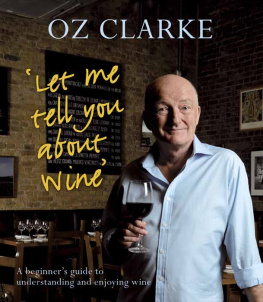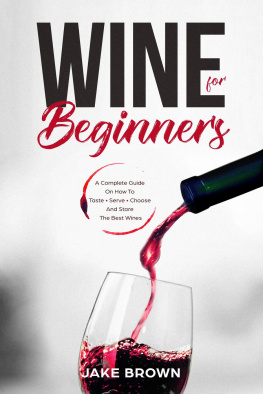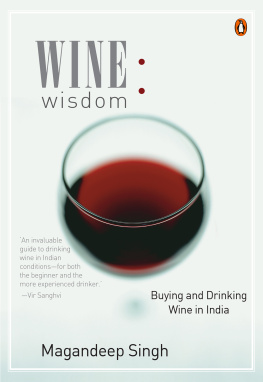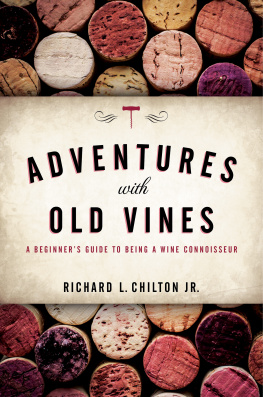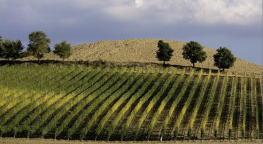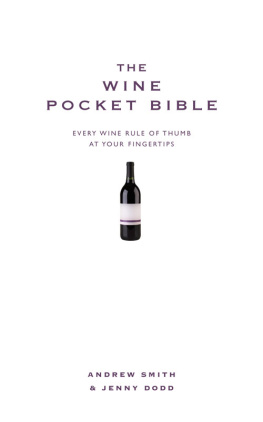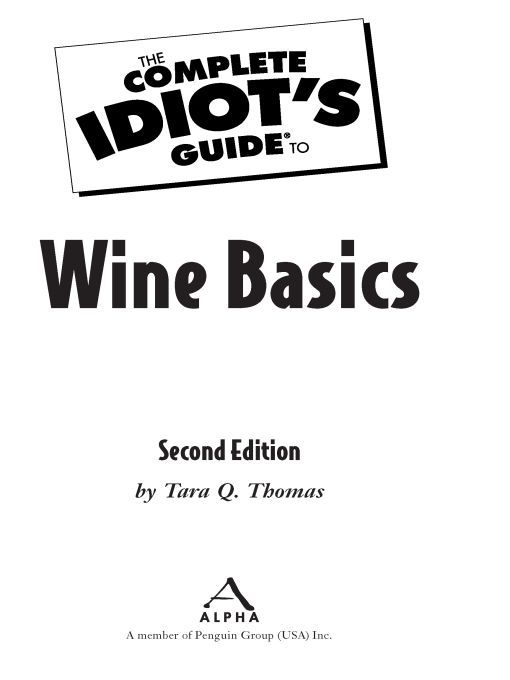Table of Contents
Foreword
Tara is my friend. Though I havent seen her lately because our insanely crazy schedules of wine researching, vineyard globetrotting, and business-as-usual projects have kept us our calendars solidly booked, Tara remains close to my heart because she understands how to bring wine to the masses. Almost an anomaly in the sometimes elite world of wine, she delivers winespeak in a way that engages the public-at-large yet never insults her audience with patronizing wine baby talk.
In my role as Cellarmaster for BevMo, a retail chain with more than 80 stores, I face the daily challenge of wine communication with an audience ranging from youthful neophytes to seasoned wine geeks. As an overtrained wine professional, I must guard myself from forgetting that I came from exactly the same place nearly four decades ago: a young adult without a clue about the subject of wine.
Wine education, unlike mandatory formal or informal schooling, is an elective. One chooses to learn about wine because of desire, not because of basic necessities of survival in the modern world. Even the most experienced wine person, less a few wine brats born into wine families, starts out with some kind of desire or even (in my case) an epiphany. When I started managing my familys beverage department in 1968 at the Ashbury Market in San Franciscos Haight Ashbury, we had very little premium wine to sell. By the time I revamped it, a decade later, we offered hundreds of fascinating wines from all over the globe. How did this happen?
I had literally stumbled into a cellar of a family friend in 1973 and a pour of the 1968 Beaulieu Vineyard Special Bottling Burgundy found itself in my glass. Immediately bitten by the incurable wine bug, I could not stop thinking for weeks, There must something to this wine stuff. From that point, I became so mesmerized with the subject that I became a hopeless wine romantic.
The relentless journey had begun, researching like crazyI even resorted to searching the back stacks at the main branch of the San Francisco Public Library. Great wine information was hard to find in those days, and nothing as comprehensive and delightful as Taras book, The Complete Idiots Guide to Wine Basics, Second Edition. Where was Tara, one of the top wine educators for the people, when I really needed her? I am not sure if she was even born yet.
Over the years, Tara has been one of those special people in my life, to whom I would always try to sit close at a formal wine dinner. Why? Because, I always enjoy her company and would always get honest comments. Fun and exciting, we would often share stories, ideas, and antidotes about wine, food, and life without one-upmanship that is too often rule and not the exception. I would always learn something new without pretension, and that is always refreshing amongst wine pros.
The Complete Idiots Guide to Wine Basics, Second Edition, is a complete wine education for not just the novice but for everyone. While my research is pretty good, I will never get to the point where I have stopped learning. While some professionals will pooh-pooh such a seemingly Wine 101 kind of a book, I challenge even the super pros in the wine world to say that they cant learn from this book. Covering the subject matter, The Complete Idiots Guide to Wine Basics, Second Edition, could easily become everyones bible of wines. At the very least, this book is an indispensable reference guide. In my recent reading of the first edition, I learned stuff that was so stunningly simple yet put in such a logical, commonsense way making her explanation incredibly obvious.
In my 35 years of service in the wine industry, I have met more people than I even care to admit. Tara Thomas stands out because she cares about her subject and presents it authoritatively without the overuse of jargon. Never pandering nor over-intellectualizing, Tara brings herself into your living room as if you have invited her over as a friend to enjoy a glass of wine. You ask her a question; she listens and answers without lecturing. Everyone in the living room is simply having a good time and learning, too. My hope is that you will enjoy The Complete Idiots Guide to Wine Basics, Second Edition, as if Tara personally wrote if for you so that you can genuinely enjoy wine just as she does.
Wilfred Wong
Cellarmaster, Beverages, more!
Introduction
Lets get this straight right off the bat: youre not an idiot. If you were you wouldnt have picked up this book, because the only idiots out there when it comes to wine are those who think they know it all.
The world of wine is a huge and exciting one. There are as many types of wine as there are grapes, places, and people making themin other words, there are more wines than any one of us could get through in our lifetime. Add to this the fact that wines change with every year, and its an endless array.
That may sound depressingI mean, how can you even begin to learn about something that has so many permutations and variables? But its actually not that hard. All it takes is an open mind and an open mouth.
I started in the wine business with little but the desire to know more about winemuch like many of you. I didnt plan to study wine for a living, which is essentially what I do. But after so many delicious bottles, after so many bad bottles that made me want the delicious bottles more, and after meeting so many interesting, kind people, I was hooked and decided to work on sharing the excitement with others.
I hope youll find that excitement in this book. If you havent spent a lot of time tasting different wines, you might find it a bit slow going in the beginning. But stick with it: learning about wine is all about paying attention to what youre tasting. This book is just here to help you along and encourage you in helpful directions. At the very least, by the end you should have drunk a lot of great wine.
How to Use This Book
Wine isnt so hard to learn about if you just break it down into small steps.
Part 1, Grape Expectations: Laying Down the Basics, covers exactly that: what wine is, how its made, and why theres such endless, wonderful variation from grape to grape and place to place. You also learn how to parse any wine label you come across and how to get the most out of every glass of wine.
Part 2, What to Taste: The Big Nine, tackles the most popular wine grapes in the world: Chardonnay, Sauvignon Blanc, Riesling, Pinot Grigio, Cabernet Sauvignon, Merlot, Pinot Noir, Syrah, and Zinfandel.
Part 3, Regional Specialties, covers wines made from grapes that excel only in certain places and blends unique to different parts of the world.
Part 4, Special Styles, is where you find out what makes sparkling wine sparkle, dessert wines sweet, and fortified wines strong, with details on where to look for the best examples.
Part 5, Shopping Time, helps you find good deals on wine, as well as offers tips on where to put it all.
Part 6, Now You Have the Wine List , offers pointers on how to navigate any restaurant wine list like a pro. You find out whats the deal behind the tasting ceremony, too, and how (and when) to send back wine gracefully. And speaking of restaurants, this section also gets to the heart of why we study wine: to be able to drink better with dinner or any meal. You find tips on pairing wine and food whether youre dining out or in.


